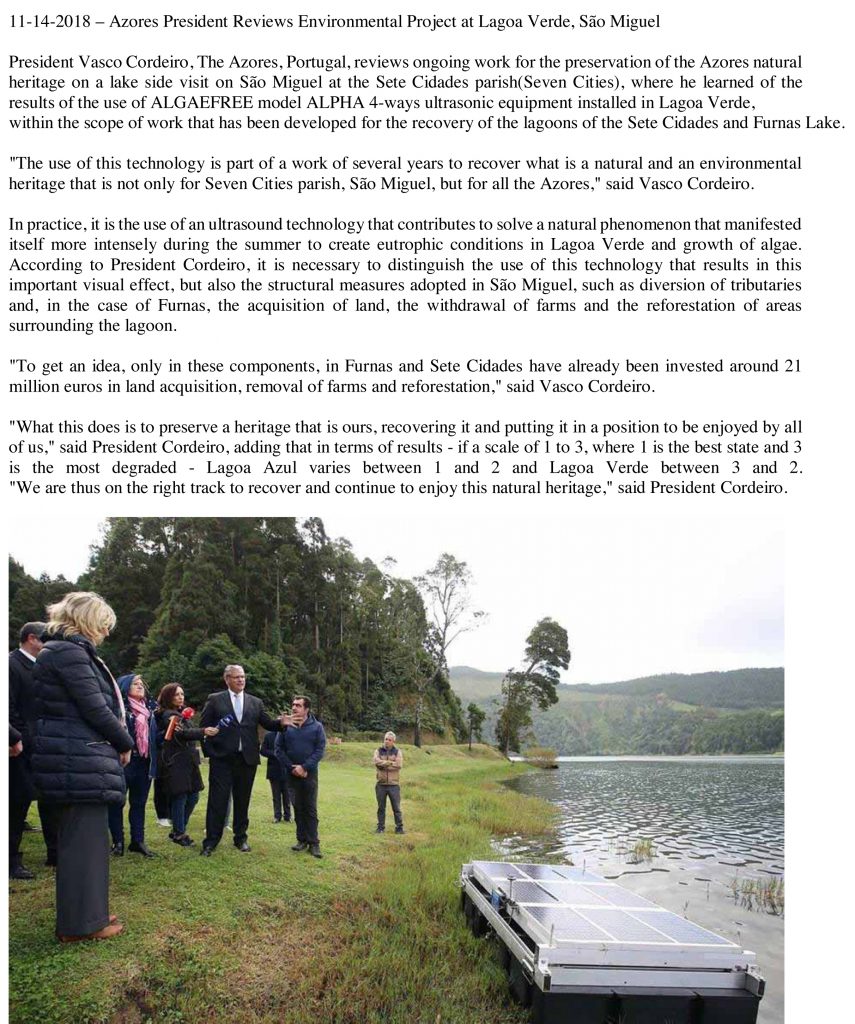Coming Soon…
ĐI 100% GREEN AND SUSTANABLE
Rau / Nông nghiệp
WASTEWATER TREATMENT BY ULTRASOUND
New stronger 2023 model, ALPHA MAX for wast water treatment.
mod ALPHA. Quattro-DB® MAX 4-ways
transducer is the premium system to prevent
algae, là một bộ phim, bacteria’s and other growths problems for the wastewater
and it’s the only way to replace expensive and dangerous chemicals
and it will also save you lots of maintenance problems.
SolaRAFT float who comes with Bluetooth, for 1 or 2 transducers.

Monitoring
is the most sophisticated system the world has ever seen.
Transducer in a combination with transducer and water quality monitoring.
TRANSFORMATION in drinking water reservoirs
OVERWELMINGLY RESULT CUSTOMER SAY
ULTRASOUND IN WASTWATER TREATMENT
Nutrients loading into the wastewater and reservoirs is becoming more and more obvious with every passing year.
Toxic algae bloom warnings are now common in places that they have not been observed before all across our planet.
Methods of remediation range from doing nothing to archaic applications of chemicals into the water systems which can
completely wipe out the entire biome. Furthermore, these chemicals speed up the recycling processes of phosphates and
nitrates and cause subsequent blooms to be larger and more unmanageable than the previous one. HBS technology is
working to make sure these chemical applications are a thing of the past. Our ubiquitous systems are nearly invisible,
can operate freely off the power of the sun, and effectively work to both mitigate current blooms and prevent future blooms
from occurring as long as the units are kept maintained. Not only will you experience an absence of algae, but your turbidity
will greatly decrease as well, letting the natural beauty and color of the water illuminate the systems.
mod ALPHA. Quattro-DB® MAX 4-ways
ALPHA ultrasound systems emit sound waves in 4 directions simultaneously.
and 1.582 different frequencies to create an environment of critical structural resonance.
The resonance causes a very unique environment in the immediate vicinity as it can critically vibrate
internal parts of green algae and diatoms causing them to internally tear apart preventing proper fluid flow.
In blue-green algae, this effect causes gas vesicle tubes to break causing loss of buoyancy and they sink out of light.
The resonance also causes bacteria to avoid colonization because it is similar to water turbulence, a condition they avoid in nature.
This helps to keep the walls clean. The prevention of the initial bacterial growth eliminates the attachment of algae, barnacles, and other crustaceans.
Effective treatment to control algae. Use of ultrasound through water can eliminate up to 95%
of existing bacteria and algae and controlling growth and thus reduce or eliminate the need for chemical dosing.
ALPHA system prevents the formation of new algae in both sessile and planktonic form.
Effectness of mod ALPHA. Quattro-DB® MAX 4-ways

PIRRAMIMMA Winery in South Australia was awarded fourth in the AWC Vienna Best Australian Producer title in 2021 for
installing the ALGAEFREE model ALPHA 4-ways in August 2021.

Picture no 1 is taken on August 23 when ALPHA starts the process to clean up the water.
Picture no 2 is taken after September 2 and shows how ALPHA is dislodging the algae.
Picture no 3 is taken September 6 and shows the way ALPHA is breaking down the algae into smaller clumps.
Picture no 4 is taken September 9 and shows the result with the ALPHA 4-ways Ultrasound System 3 weeks after first installation.

THIS IS OUR MANUFACTURERS RESULT AFTER 4 WEEKS TAKEN IN THE USA

THIS IS WHAT YOU CAN ALSO EXPECT
RESULTS FROM ALPHA 4-ways CLEANING UP LAKE LAGOA VERDE IN PORTUGAL

Recommended for wastewater treatment!
Under the NEW 2023 model small SolaRAFT float there can be one or two pcs
mod ALPHA. Quattro-DB® MAX 4-ways transducers who control green algae in a
radius of 150m and blue green algae in 400m.
Optional with monitoring system.
Wastewater Treatment
One novel approach that is being utilized lately is with the use of ALPHA wastewater ultrasound technology.
These high intensity sound waves are applied to sewage to promote hydrolysis during sludge treatment.
Ultrasound causes the destruction of bacterial cells and difficult-to-degrade organics.
The use of ultrasound isn’t entirely new, however.
Europe has been using this process for several years across 14 wastewater treatment plants.
Germany has documented impressive results from two full-scale treatment plants
that use wastewater ultrasound technology in treating sludge.
Ultrasound Applications in Wastewater Sludge Pre-treatment: A Review
Pages 277-313 | Published online: 14 May 2007 Download citation







